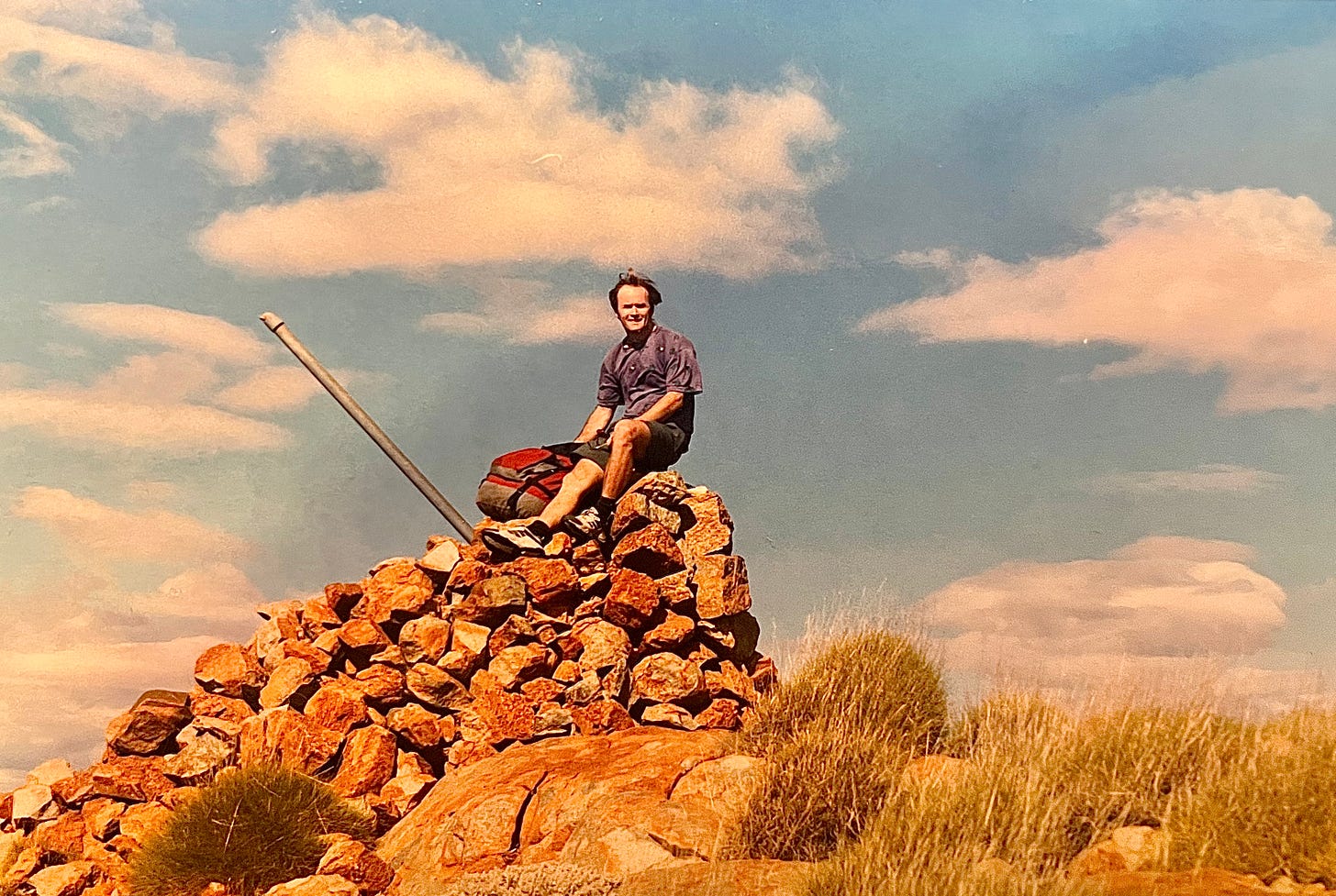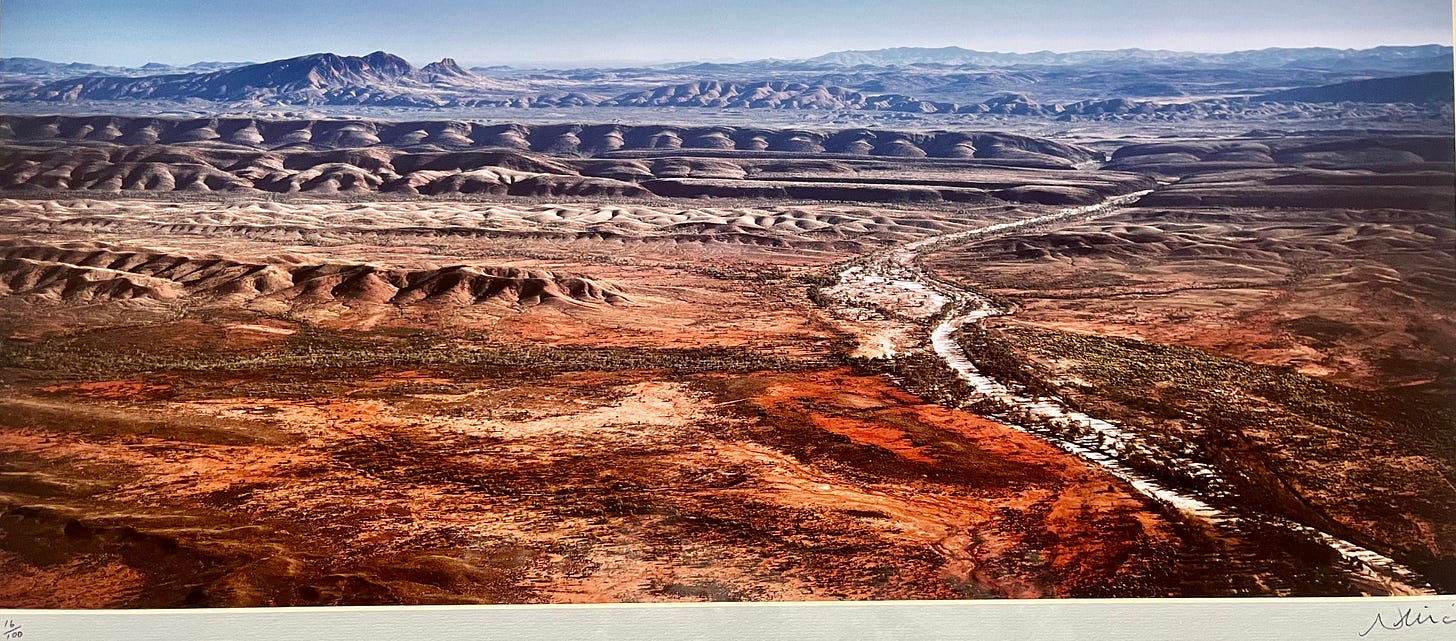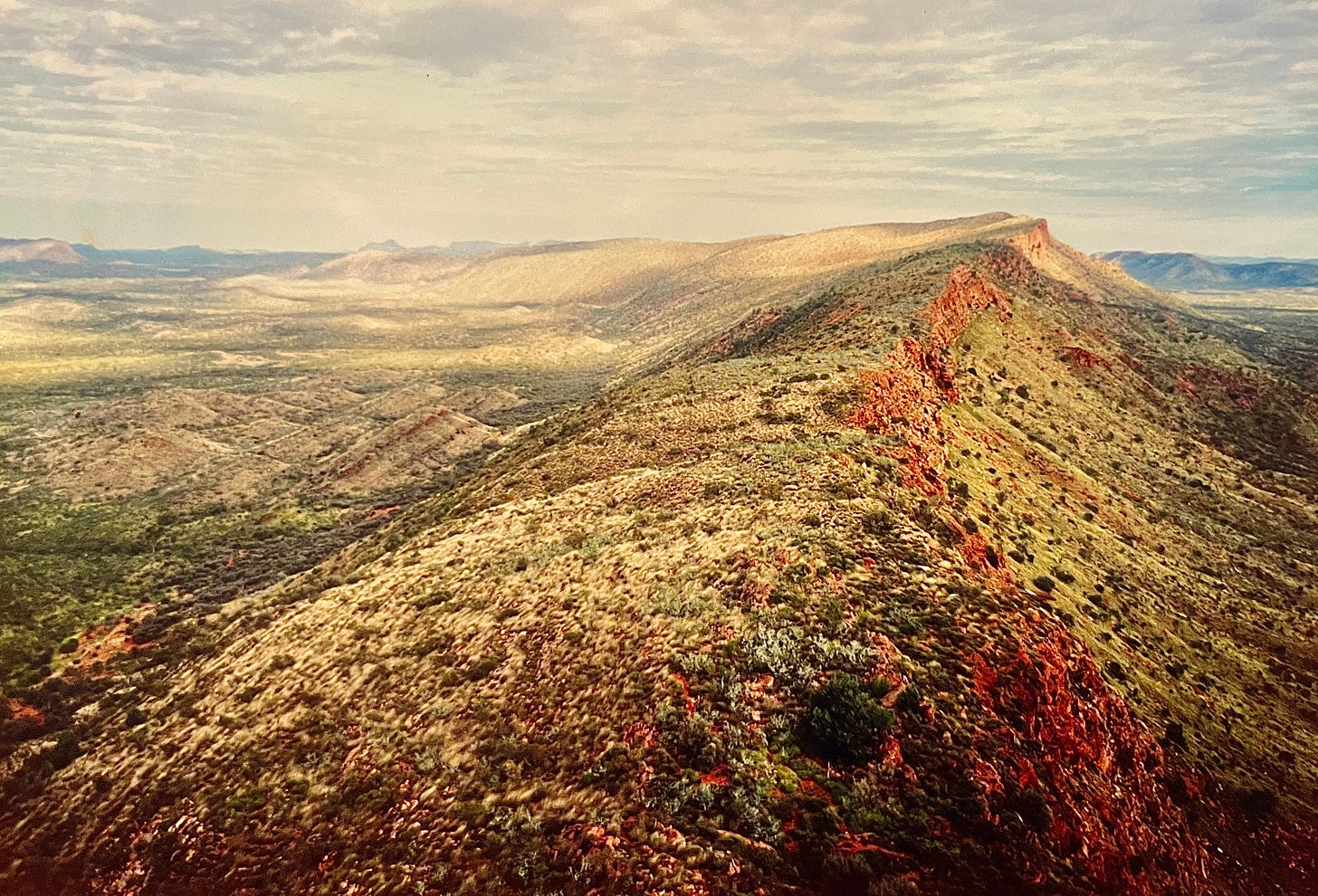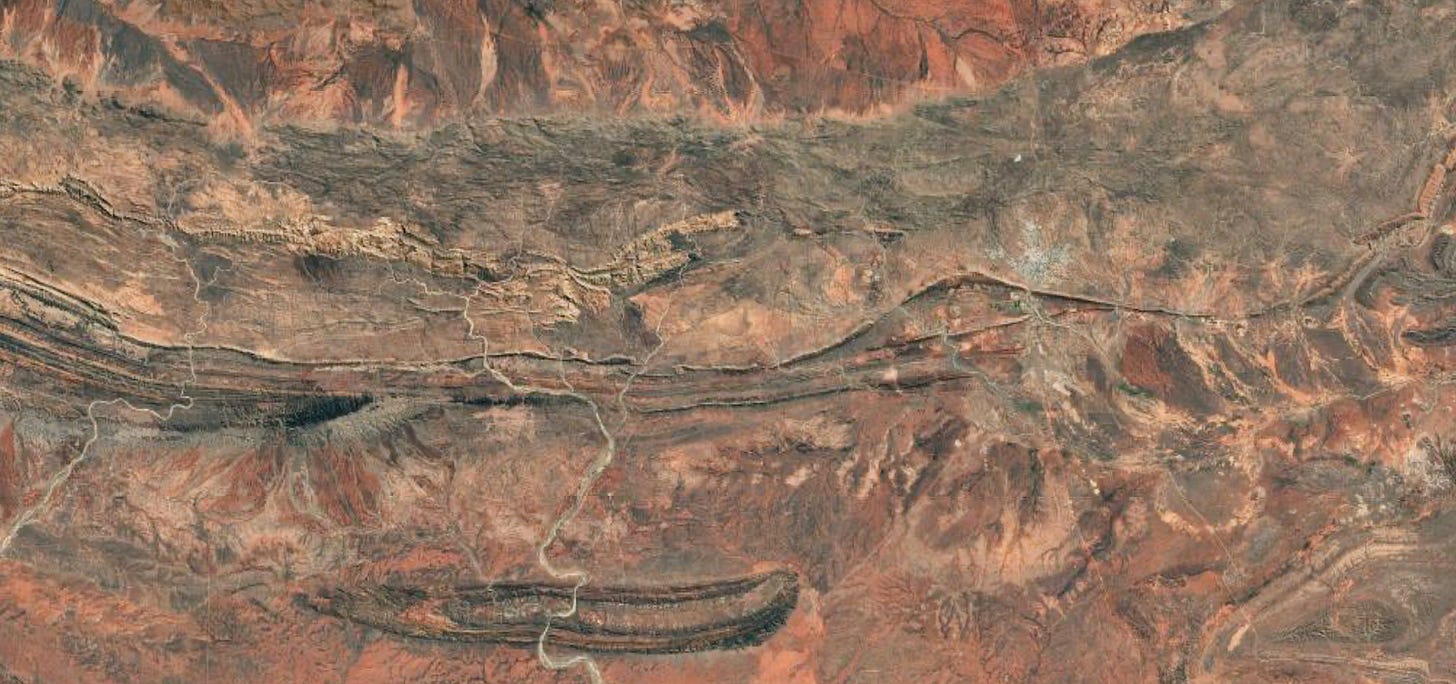Spinifex
Leaving Alice (lands of the Arrernte people)
The year is 1997. June 14th.
I am about to commit an act of profound emotional self harm.
I am about to leave Alice Springs, that small town in the centre of this continent where I have made my life and started to raise my children and fallen ecstatically in love with the landscape, with the people who have always lived there and then also - quite unexpectedly - with another Poet.
Which makes this an age old same old story….
There are reasons why I was susceptible to this - open to this. There are reasons why she was too. We each had wonderful children, whom we adored. We were also both married, and unhappy, but trying to pretend otherwise. It was selfish, and hurtful, but utterly unstoppable.
You don’t need to know the detail but you do get the drift, as they say, and Alice Springs was a small town, so after a year or more of chaos and regrettable pain for all involved, children and partners included - and also aching excruciating love - the situation was impossible. One family had to leave. I chose.
But I gave myself one last farewell to the land itself - a journey into Tjoritja - the far ranges West of Alice Springs where the land rises in indescribably ancient, deeply eroded waves of earth and stone, dissected by the dry sandy beds of intermittent rivers.
It is a landscape to die for, and some have.
I had unfinished arrangements to negotiate with some of the remote communities I was working for, and I needed to say goodbye to some friends.
I also gave myself the chance to climb to the summit of Urlatherrke (Mt Zeil) - the highest peak in Central Australia. It was a flash ascent, with no map, and there is no track, and it’s quite a hard place to get to really, but I had a whole desert to absorb and a desperate need to rise - in a very literal sense - above all the storm of my own life.
I took a photo, with a self timer - both photographer and my own subject, but the photo below also caught a few pillows of Spinifex - the native grass of the Australian desert lands. You can see it here:

And the thing to know about Australian Spinifex is - it isn’t “Spinifex” at all, but actually Triodia Brizoides, an incredibly tough xerophytic (desert adapted) tussock grass with leaves that are rolled into long tight spines, sealed with resin and each ending in a wickedly sharp needle tip. The tussocks grow close together, and it is impossible not to brush against them when walking cross country.
From a distance the spinifex can look soft, and even green after rain, but with every contact the needle leaves brush against your leg, raising scratches in the skin and - frequently - the dry black tips pierce you, then break off….
You can wear thick long pants and gaiters over your lower legs or - like the Aboriginal traditional owners, and like me - you just accept that pain is part of living; something you endure, and feel, and consider, and then move beyond.
But later, long after the red welts have healed - you find that your body has adjusted, and learned, and the spinifex spines start to resurface, like buried memories, one by one, by one…
The year is 1997. June 14th. I am being driven, down the road below, towards the gap in the distant ranges, to the airport beyond.
Spinifex (leaving Alice)
Leaving
was something
I let myself do.
Let the car take me south
through Heavitree Gap.
Let the plane lift me up.
Let the mountains fall down
like the hands in my lap.
Let the land become
a picture of itself.
Let the wide desert sands diminish
to a size I could compass -
a dot painting, a map.
Let my life become something
less than it was -
a memory, a story,
a scrap of home made paper
furred at the edge
where you tore the page across.
I’ll never know
what was on the other half,
what was lost –
like my life,
torn on the line
of one plane journey -
one straight knife slash
across a continent -
which should have been
quick and clean
but which left
such ragged edges,
such permanent reminders
of all I left behind.
Like the spinifex spines
in my leg;
broken black tips of
long green needles
from the shattered rocks
of Watiyawanu,
Urlatherrke.
I didn’t feel them
at the time,
the desert being too real
to admit of such small pain.
Weeks later though
they worked their way out
like tears squeezed
from a dry land.
Memory is like this -
the broken barbs of things
lodged deep within,
working their way out years later,
reminding you of the too bright air
and the blue blue sky
on the day they needled in.
Afterword:
If you have been following my posts for a while you will know that I am presenting a mixture of current work - sometimes written the day of publication - and older work, including a collection from my years living and working in remote First Nation/Aboriginal communities in the desert lands of Central Australia.
Most of my desert poems were published long ago in my little book “Spinifex” (Five Islands Press. Wollongong. 2001) but copies of that are now almost impossible to find.
I am presenting some of them here because they they are a foundational part of how I see the world, and they were the start of my "public" poetry. Also, in a purely personal sense, republishing them here - with images this time, and with an introduction - is helping me to reassess them, and what they mean to me, and what that whole period of my life means to me, in the context of who I am now. It's helping me to go in new directions and create the new work which is also appearing here - often in collaboration with my wonderful partner, Meg Morrison, with whom I found love again, 25 years ago.
If you are curious - there is a sequel poem to Spinifex - “Half-Life.”
PS If you don’t understand the reference to “Dot Paintings” - they are the dominant painting style of Central Australian First Nation Aboriginal peoples, drawn from traditional painting on the body and on ceremonial objects. Many dot paintings represent the land itself, and they can look seriously like the desert seen from far above…. You can read more here: https://japingkaaboriginalart.com/articles/aboriginal-dot-painting/ If you found that interesting, you may also want to read my account of the death of one of Australia’s greatest artists - Emily Kame Kngwarreye
(All photos except the first are my own. The first photo was a gift to me by my colleagues in Alice Springs. I cannot recall the photographers name, but I have included his signature in acknowledgment of his work).







I hardly know where to begin, Dave. This is raw and beautiful, heartfelt and painful. I am in awe at how you put it out into the world. I want to return to this as inspiration - the departure heartbreaking but life-giving. Thr memory of the spinifex will stay with me for a long time.
I have never experienced spinifex barbs up close and personal. But I have experienced wounds and wounding in ways that require the long extraction process you refer to, friend. The contour of that high point you climbed...the colors and the contour are haunting. It seems almost inviting. Like one long continuous ridge. Although I imagine, with not track, it is quite the challenge. You are a dashing pirate aboard the cairn at the top. As to love lost and love won and moving on...ho hum. Imagining a world without you and Meg together seems not very realistic to me who has just come to know you here in the latter days. So changes had to be made and recovered from. We get no sympathy from nature for those transitions.